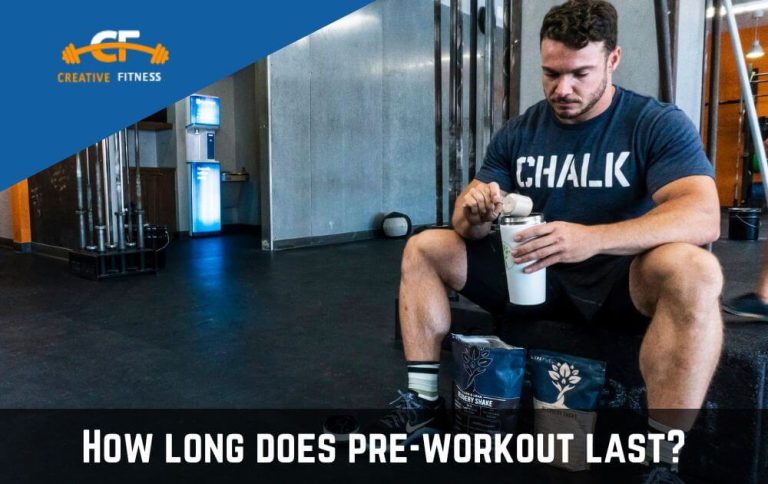How to Jump Higher? | 12 Best Exercise to Boost your Jump
Have you ever marveled at the breathtaking jump of a basketball player or a high jumper and wondered how they managed to reach such heights? The ability to jump higher is not only impressive to watch, but it also has practical applications in various sports and activities. If you’re looking to improve your vertical jump, you’re in luck!
In this guide, we will explore some effective techniques on how to jump higher and achieve greater athletic performance. And if you’re also interested in getting more vascular, stay tuned for some bonus tips later in the article.
12 Best Exercises 2023 – How to Jump Higher?
There are many reasons why someone might want to learn how to jump higher, from sports like volleyball and basketball to simply wanting to improve their physical abilities.
Regardless of your reasons, there are a variety of exercises you can do to help increase your vertical jump. Here are 12 of the best exercises to help you jump higher:
1. Squats
Squats are a classic exercise that can help improve your leg strength and overall jumping ability. To perform a squat, stand with your feet shoulder-width apart and slowly lower yourself down as if you were sitting in a chair. Make sure to keep your weight on your heels and keep your back straight. Push through your heels to stand back up.
2. Lunges
Lunges are another great exercise that can help strengthen your legs and improve your jumping ability. Start by standing with your feet hip-width apart and take a big step forward with your right foot.
Lower your body until your right thigh is parallel to the ground and your left knee is almost touching the ground. Push through your right heel to stand back up and repeat on the other side.
3. Calf Raises
Your calf muscles play a crucial role in jumping, so it’s important to work them out as well. To do a calf raise, stand with your feet shoulder-width apart and raise onto the balls of your feet. Hold for a few seconds and then lower back down.
4. Jump Rope
How to Jump Higher? Jumping rope is a great way to improve your overall fitness and endurance, and it can also help you jump higher. Try to jump rope for at least five minutes at a time, focusing on getting as many jumps in as you can.
5. Box Jumps
Box jumps are a plyometric exercise that can help improve your explosive power and jumping ability. Start by standing in front of a box or step that’s about knee height. Jump up onto the box, making sure to land softly on the balls of your feet. Step back down and repeat.
6. Depth Jumps
Depth jumps are another plyometric exercise that can help improve your jumping ability. Start by standing on a box or step that’s about knee height. Step off the box and immediately jump as high as you can when you hit the ground. Try to land softly on the balls of your feet.
7. Single-leg Hops
Single-leg hops can help improve your balance and coordination while also strengthening your leg muscles.
Start by standing on your right foot and hopping forward as far as you can. Land softly on your right foot and immediately hop back to your starting position. Repeat on the other foot.
8. Power Skips
Power skips are a variation of regular skipping that can help improve your jumping ability. Start by skipping forward as you normally would, but focus on getting as much height as possible with each skip. Land softly on the balls of your feet.
9. Bulgarian Split Squats
Bulgarian split squats are a challenging exercise that can help improve your leg strength and balance. Start by standing with your right foot on a bench or step behind you.
Lower your body down into a lunge position, making sure your left knee is directly above your left ankle. Push through your left heel to stand back up and repeat on the other side.
10. Standing Long Jumps
How to Jump Higher? Standing long jumps are a great exercise for improving your overall jumping ability. Start by standing with your feet shoulder-width apart.
Bend down and swing your arms back behind you as you jump forward as far as you can. Try to land softly on the balls of your feet.
11. Wall Sits
Wall sits are a static exercise that can help improve your leg strength and endurance. Start by leaning your back against a wall and lowering your body down until your thighs are parallel to the ground. Hold this position for as long as you can, aiming for at least 30 seconds.
12. Deadlifts
Deadlifts are a compound exercise that can help improve your overall strength and power. To perform a deadlift, stand with your feet shoulder-width apart and grip a barbell with both hands.
Slowly lift the barbell off the ground, making sure to keep your back straight and your weight on your heels. Lower the barbell back down and repeat.
Also Read: How Long Does it Take to Lose Muscle Mass?
How to Jump Higher? Different Sport Prospective:
When it comes to how to jump higher in volleyball, basketball, or to dunk, these exercises can be particularly helpful. For example, box jumps and depth jumps can improve your explosive power, which can help you jump higher for a volleyball spike or a basketball dunk.
Power skips and standing long jumps can help improve your overall jumping ability, making you more effective on the court or field. It’s important to note that while these exercises can be effective in improving your jumping ability, they should be performed safely and in proper form.
Make sure to warm up before each exercise, start with lighter weights or lower heights, and gradually increase intensity and difficulty as you progress.
And remember, consistency is key! By incorporating these exercises into your regular workout routine and sticking with them over time, you can improve your vertical jump and achieve your goals.
Tips – How to Jump Higher?
In addition to performing these exercises, there are several other things you can do to improve your jumping ability and maximize your results. Here are a few tips to keep in mind:
- Maintain a healthy diet: Eating a diet rich in protein, complex carbohydrates, and healthy fats can help fuel your body and provide the nutrients it needs to build muscle and improve performance.
- Get enough rest & recovery: Adequate rest and recovery are essential for muscle growth and repair. Make sure to get enough sleep each night, and give your muscles time to recover between workouts.
- Incorporate stretching & mobility work: Stretching and mobility exercises can help improve your range of motion and prevent injury. Consider adding dynamic warm-up exercises and static stretches to your routine.
- Stay hydrated: Drinking enough water is important for overall health and performance. Aim to drink at least 8 glasses of water per day, and more if you’re exercising or sweating heavily.
- Practice jumping technique: While strength and power are important for jumping higher, proper technique is also essential. Make sure to practice jumping with correct form, and consider working with a coach or trainer to improve your technique and efficiency.
Frequently Asked Questions:
How to Jump Higher? Training programs cannot be perfected. The greater your power-to-weight ratio and the more flexible you are, the greater your vertical jump will be. You can achieve these goals through a variety of exercises and programs.
Jumping ability cannot be significantly improved in a week or five minutes. Strength, power, and technique must be built over time to jump higher. You can improve your vertical jump at home by doing exercises like squats, lunges, and box jumps.
Plyometric movements are constantly performed in acceleration and top-end speed by repeated contact with the ground and extended lower body movements. Running speed will increase with jump training.
Final Verdict:
How to Jump Higher? Improving your vertical jump is a process that requires consistent training and dedication.
By incorporating exercises like squats, lunges, and box jumps into your routine, along with maintaining a healthy diet and proper rest and recovery, you can gradually build the strength, power, and technique needed to jump higher.
While it’s not possible to see significant results in just one week or five minutes, sticking with a consistent training program can lead to noticeable improvements over time. Remember to prioritize safety and proper form, and consider working with a coach or trainer for guidance and support.

Drew Mathews is a well-known fitness writer who has contributed to the industry for several years. His vast knowledge and expertise are shared with his readers on CreativeFitness.com, where he writes as a fitness coach with extensive experience. Drew has been working in the fitness industry for over a decade and has acquired extensive knowledge and experience in the field.







